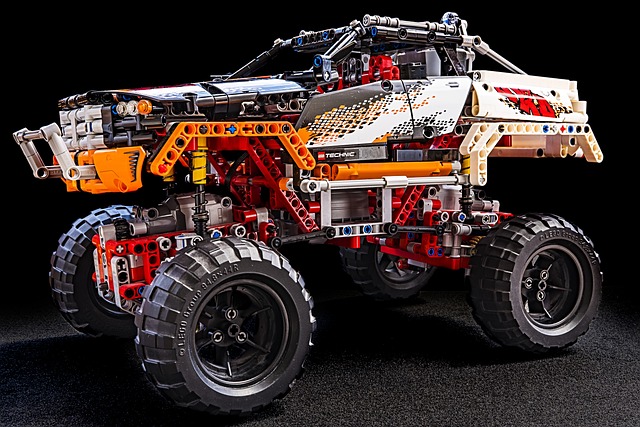What Methods Are Used to Manufacture Plastic Products?
Plastics are polymers, typically held together by strong bonds, so they can be used for various consumer and industrial applications. We use plastics in products to make our lives easier, cleaner, safer, and more enjoyable. However, obstacles are inevitable, and it’s necessary to address challenges thoroughly and consistently. Plastic manufacturing has increased worldwide with the increasing incorporation of polyvinyl chloride in the making of electrical wiring, switches, and light fittings, to name a few.
Plastic manufacturing involves a series of steps, the most important one being the selection of raw materials. Each material has different properties and is suited for various applications. Additionally, the type of plastic used in the manufacturing process affects the durability, strength, and resistance of the end product. The production of goods with the help of plastic starts with transforming oil and natural gas into hydrocarbon monomers connected to long chains. Various types of polymer plastics can be produced, such as PET, PVC, and HDPE.
Polymers can be transformed into complex products. This process is referred to as polymerisation. Different polymerisation techniques are used to obtain polymers with unique characteristics; at times, a catalyst is used to expedite the reaction. Complex chain reactions occur in homogenous or heterogenous media, typically in the liquid phase. Converting raw materials into useful plastic products involves several sub-processes, as follows:
Injection Moulding
Injection moulding is a method by which large plastic products are created, usually without additional finishing. The plastic polymers are converted into plastic pellets and introduced into an injection moulding machine for the making of electronic and medical equipment, automotive parts, and general consumer goods. The machine can accept all types of mould, so injection moulding is suitable for products with complex geometry. Injection moulding large plastic products improves with scale in spite of the initial investment.
On the whole, injection moulding is simple. The raw material is heated until it liquefies, after which it’s forced into a mould that establishes the shape of the product. Once the polymer plastic is cool, the finished part can be extracted. Simple as it may seem, injection moulding is actually a complex process because it’s dependent on the behaviour of the plastic and the ability to accommodate intricate products. Motorised injection moulding machines are powered by servo motors. CNC is increasingly adopted in injection moulding machines to enable high-speed inaction under programmed control.
Structural foam moulding is a low-pressure injection moulding process where inert gas is introduced into the melted material to reduce the density and weight of the end product. Another frequently used method to produce structural foam is to use a traditional injection moulding machine with blowing agents built into the material. One of the benefits of structural foam moulding is it can be used for low-volume applications, such as producing large plastic covers or plastic structural components with high cosmetic requirements.
Extrusion
Extrusion moulding, as the name suggests, forces the plastic material through a die to create continuous linear, two-dimensional shapes. The final shape can be cut into various lengths based on the application. The pre-treatment of the mixture under pressure consists of making full contact between the plasticiser and particle surfaces, therefore, removing the gas inclusion to ensure uniform density. Extrusion moulding machines come in different sizes, so they’re suitable for the medium production of plastic products from small to large sizes.
There are several variables to take into consideration as far as extruding materials is concerned, such as temperature, the pressure at which the material is forced through the die, and the time of extrusion. Extrusion moulding is much like plastic injection moulding; with injection moulding, the molten material is perpetually pushed through the die to create complex products. Most thermoplastics can be used for extrusion, yet materials with higher rigidity are preferable because the shape is easier to maintain. The extrusion process can be dry or wet depending on the way the plastic is plasticised.
Rotational Moulding
Rotational moulding offers much in the way of design flexibility, and the moulds for the process are relatively inexpensive as they don’t have to withstand pressure. It lends itself to hollow, complex forms, such as bulk storage containers or components for aircraft ducting. Just about any shape can be obtained. Rotational moulding is a three-stage process that encompasses a mould on a heating frame, a heating chamber, and a cooling chamber. What happens is that a plastic material, typically in powder form, is deposited in a hollow mould which is then rotated on two axes.
Rotational moulding is appropriate for large, one-piece hollow components and double-walled open containers, so it’s advantageous for start-ups and small businesses. Rotational moulding machines are inexpensive compared to others of the same type, so the investment required is insignificant. Both electricity and gas are used in the process, so individual sites must determine their ranking as regards the average performance. Equally, caution should be taken in applying the benchmarks.
Rotational moulding uses energy to get the oven to the right temperature. Poorly insulated areas will inevitably lead to heat loss, which in turn increases energy use, so improvements must be made in terms of sealing and insulation. The quality of the end product depends on the quality of the mould used, so it’s necessary to emphasise the importance of quality control in the manufacturing process. By ensuring the precision and reliability of the mould, it’s possible to achieve consistent production rates, ultimately leading to customer satisfaction.
Conclusion
Plastic products can be moulded, extruded, or cast into various shapes and sizes. The end products are flexible and durable, which is especially important for certain industries. Facilities in the plastic manufacturing sector make intermediate products used as inputs in the production of other goods. New and recycled polymers are used to give life to products like casings for TVs. Injection moulding, extrusion moulding, and rotational moulding are some of the most common ways to manufacture plastic products, and each is used for different applications. At times, these manufacturing methods can be used in combination to produce complex components.





























